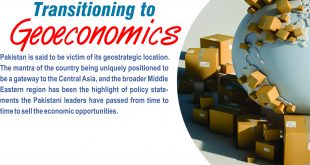The discipline of international relations treats the application of diplomacy designed to attain core foreign policy objectives as an important source of national power. Since 1947, all the successive governments in Pakistan have adopted different approaches in this realm, with a view to pursue the country’s economic and security objectives. Due to the chronic leadership crisis, most of the political dispensations have, however, failed to employ such a foreign policy that would ensure effective security and economic self-sufficiency of the country. Given the country’s potential resources and its significant geostrategic location, a competent leadership is all what we need to transform the current defective foreign policy into a pragmatic one.
While critically evaluating the 70 years of Pakistan’s foreign policy, it is pertinent to explore different eras the country has gone through since independence in 1947.
The era of friendship with all (1947-53)
After the independence, Quaid-i-Azam Muhammad Ali Jinnah described the core principles of Pakistan’s foreign policy by categorically stating:
“Our foreign policy is one of the friendliness and goodwill towards all the nation of the world. We do not cherish aggressive designs against any country or nation. We believe in the principle of honesty and fair-play in national and international dealings, and are prepared to make our contribution to the promotion of peace and prosperity among the nations of the world. Pakistan will never be found lacking in extending its material and moral support to the oppressed and suppressed peoples of the world and in upholding the principles of the United Nations Charter.”
Pakistan forged amicable relations with the newly-established Muslim countries, and supported the freedom movements of Indonesia, Algeria, Tunisia, Morocco and Eritrea against the Western colonial powers.
Despite Jinnah’s peace overtures, India adopted an expansionist policy towards Pakistan by annexing the princely states of Junagadh, Hyderabad and Jammu and Kashmir, an act that led to the outbreak of the war over Kashmir in 1947. Besides, New Delhi prevailed upon Afghanistan to reject the Durand Line as the permanent border between Pakistan and Afghanistan. Such antagonism on the part of India sowed the bitter seed of perennial hostility between the two countries.
Alignment with the West (1953-1963)
Due to the Indian threat and the spectre of Communism in Asia, Prime Minister Liaquat Ali Khan snubbed Moscow’s invitation and, instead, chose to visit the United States (1950). For, after the deadly Second World War, the Soviet Union did not possess adequate monetary resources and sophisticated weapons to assist Pakistan’s budding economy and ensure its security from the Indian threat.
Prime Minister Khan’s visit conclusively demonstrated Pakistan’s tilt to the US-led West, which prompted the Soviet Union to partner with India in this part of the world. The Pak-US partnership led to the Mutual Defense Assistance Agreement which was concluded in 1954. Under the Accord, the US arranged to provide modern war training to Pakistan’s armed forces. Such effective training helped increase the capacity and capability of Pakistani troops vis-à-vis India.
The signing of SEATO and CENTO in 1954 and 1955, respectively, further cemented the Pak-US relations. Through these regional blocs, the US wished to contain the proliferation of communism in South, West and East Asia. Washington rewarded Pakistan’s support against the Soviet Union through economic and military assistance.
Though President Ayub Khan allowed the US to fly spy mission to the Soviet Union from Pakistani territory, Washington avoided supplying economic and military aid to Islamabad during the 1965 Indo-Pak war. Worse, the US resorted to placing economic and military embargoes on Pakistan in the postwar period.
The era of transition (1963-72)
Pakistan had to change its policy toward the West due to the US military assistance to India during the Sino-Indian war of 1962, and the Soviet Union’s threat to retaliate after its downing of a US spy plane, U-2, which had taken off from Badaber, Peshawar.
Despite earlier hostility, Moscow offered credit and technical assistance for oil exploration in Pakistan in 1961. New avenues of cooperation were explored during the visits of the then foreign minister Zulfikar Ali Bhutto and President Ayub Khan to Moscow in January and April 1965, respectively. Ayub’s visit convinced the Soviets to assist Pakistan in implementing 30 development projects during the Third Five-Year Plan (1965-70). Moscow adopted a balanced approach with regard to the Kashmir problem and demonstrated neutrality during the 1965 Indo-Pak war. Soviet Premier Alexi Kosygin helped India and Pakistan resolve the problems arising out of the 1965 war through the Tashkent Declaration that was signed in January 1966.
Pakistan’s relations with China enhanced rapidly during the said period. The two countries signed several agreements in trade, shipping and border demarcation in 1963 to expand their bilateral relations. Moreover, when Pakistan supported China in its efforts to counterbalance the US attempt at isolating Beijing regionally, Chinese president Zhou Enlai, in February 1964, declared Beijing’s support for the Kashmiris’ right to self-determination.
Bilateralism and non-alignment (1972-79)
President Bhutto endeavoured to diversify the foreign relations by withdrawing the country from the Commonwealth and SEATO in 1972. He fostered the country’s economic and diplomatic relations with East European, Asian, African and South and Central American states. Pakistan also withdrew from CENTO in March 1979 to join the Non-Alignment Movement (NAM) in September in the same year.
Moreover, Bhutto signed the Simla Accord with India on 2 July 1972, which resulted in the release of over 90,000 Pakistani prisoners of war (POWs) from Indian custody and removal of Indian troops from Pakistani soil. After hosting the Organization of Islamic Cooperation (OIC) summit in Islamabad in February 1974, Mr Bhutto made a prodigious success in restoring Pakistan’s image after the secession of East Pakistan and enhancing the country’s leadership role in the Muslim world. Under Bhutto, Pakistan made significant headways in establishing robust relations with China and the Soviet Union. Resultantly, Moscow agreed to provide loans to help Pakistani economy recover.
When, in 1976, Pakistan entered into an agreement with France to acquire a nuclear reprocessing plant, the US withdrew its A-7 aircraft offer in 1977 and suspended economic assistance and military sales top Pakistan in order to prevent Islamabad from establishing uranium-enrichment facilities. Washington succeeded to convince France also in 1978 to withdraw itself from the agreement with Pakistan.
Enter the Afghan war (1979-88)
The Soviet invasion of Afghanistan in December 1979 once again compelled the US to bury the hatchet and forge a strong partnership with Islamabad to defeat the Red Army in Afghanistan. Both the CIA and ISI prepared a raft of fighters, trained them and dispatched them to Afghanistan to fight against the Soviet forces. By the time the Soviet Union was crushingly defeated in Afghanistan in 1988, Pakistan became the second largest recipient of American aid – after Israel. However, the disruptive Afghan war adversely impacted Pakistan’s economy and security conditions as it resulted in the proliferation of weapons and fanning of religious extremism and militancy throughout the country.
The post-Cold War era (1990-2001)
When the Soviet Union decided to withdraw from Afghanistan under the Geneva Accords, signed in 1988, the US began raising an accusing finger on Pakistan’s nuclear programme. Therefore, Washington cancelled the sale of several F-16s, and barred economic assistance to Islamabad under the Pressler Amendment. However, after Benazir Bhutto’s visit to the US, the Clinton administration removed the embargoes on Pakistan and gave military supplies worth $ 368 million to Islamabad under the Brown Amendment of 1995.
During the same period, the Indo-Pak relations also took a downward spiral over the simmering unrest in Kashmir. When New Delhi massively rigged 1987 elections in the Valley, the Kashmiris took to streets and demonstrated against the blatant rigging. To silence the protesters, India resorted to employing brute force, thus instigating the Kashmiris to forcefully resist the Indian oppression. New Delhi accused Pakistan of orchestrating the instability in the Valley and requested the US to suspend the supply of aircraft and economic assistance to Islamabad.
However, India and Pakistan agreed on a framework for peaceful interaction when Indian Prime Minister Atal Bihari Vajpayee visited Lahore in February 1999. But, the spirit of the Lahore Declaration was ruined when the two countries got engaged in a limited war in Kargil during May-July in 1999.
It is pertinent to mention here that Pakistan’s backing of the Afghan Taliban in the 1990s strained the Pak-Iran relations, thereby making Iran fall into the Indian lapse. At that time, both Iran and India were immersed in backing up non-Pashtun groups to prevent the Taliban from taking over Kabul. Capitalizing on its rapprochement with Iran, India successfully persuaded Tehran to jointly constructing the Chabahar Port. Sadly, both the PPP and the PML-N governments in the 1990s did not heed to placating Iran and stop it from forging strong relations with India.
The post 9/11 era
Under the Glenn Amendment, the Clinton administration imposed economic and military sanctions on both Pakistan and India, owing to their nuclear tests in May 1998. After the fateful 9/11 incident, the US not only lifted the sanction on Pakistan but also made Islamabad its most-allied ally in the US-led war on terror. The Bush administration employed a “carrot and stick” policy to goad Pakistan into partnering with the US against terrorists in Afghanistan.
During the Musharraf era, Pakistan and India decided to reduce their nuclear arsenals and resolve the Kashmir issue in the Agra summit of July 2001. However, the Indian intransigence scuttled the Agra understanding. Menacingly, the attacks on the Indian Parliament on December 13, 2001, brought both countries on the verge of a border confrontation with the potential of escalating into a full-blown nuclear showdown. But after extensive efforts, both the countries agreed and enforced a ceasefire on the Line of Control on November 26, 2003.
Diversification of foreign policy under the PPP (2008-2013)
Though the PPP government was plagued with scandals of massive corruption, it did succeed in diversifying the foreign relations of the country. The US signed the Kerry-Luger Bill in October 2009 to grant $7.5 billion in non-military aid to Pakistan. Besides, both the civilian and military leadership played a pivotal role in resetting the Pak-Russia relations through high-profile visits to Moscow. Importantly, Pak-Iran relations also improved after the signing of the Iran-Pak (IP) gas pipeline. However, the climate of trust between Pakistan and India, achieved during the Musharraf era, turned into hostility after the 2008 Mumbai attack, which India blamed on a Pakistan-based militant group.
Current democratic setup (2013 till present)
The current democratic dispensation under the PML-N – during premiership of Nawaz Sharif – achieved two major objectives on the foreign policy front. Firstly, the country has received the full-membership of the SCO that will tremendously help Pakistan work with China, Russia and Central Asian Republics in combating the three evils of extremism, terrorism and separatism in the region. Secondly, China has decided to invest around $60 billion through China-Pakistan Economic Corridor (CPEC) for upgrading Pakistan’s transport infrastructure and energy sector. Both the successes will probably make the country a trade hub in the region.
However, the government has failed to address the ambiguities in the country’s foreign policy. This is still unclear whether the ill-conceived policy of strategic depth toward Afghanistan – against India – has been discarded or not. Kabul considers this strategy as a deliberate attempt to interfere in its affairs. Therefore, Afghanistan has shown its unwillingness to reset its relations with Pakistan. Ominously, in retaliation, the Ashraf Ghani-led Afghan government has given India a carte blanche to use eastern provinces of Afghanistan for orchestrating terrorism inside Pakistan.
Despite the lifting of economic sanctions on Iran by the US, the government has continued to drag its feet in terms of completing Pakistan’s portion of the IP gas pipeline. This has led Tehran to further forge its ties with New Delhi. The latter is set to dominate the Central Asian markets by accessing the region through the Chabahar Port via Afghanistan, thus encircling Pakistan in South Asia. Islamabad direly needs all-out support of Tehran in successfully combating the low-intensity insurgency in Balochistan and the menacing Shia-Sunni proxy war.
The present government has also failed to employ adroit diplomacy in highlighting gross violations of human rights being committed in the Indian-occupied Kashmir. The Indian lobby has continued to play the obstructive role in preventing the US from selling F-16s and providing the remaining Coalition Support Fund to Pakistan. Moreover, the government has failed to convince the world about Indian sponsoring of terrorism and insurgency inside Pakistan despite the availability of evidence such as the disclosures of detained Indian spy, Kulbhushan Jadhav.
Despite losing about 50,000 lives and over $120 billion in the war on terror, the US is still sceptical of Pakistan’s military actions against the Haqqani Network in North Waziristan. Washington has recently passed a bill making the payment of $50 million conditional to Pakistan’s visible military measures against the Haqqanis. Furthermore, the US is also reluctant to conclude a civilian nuclear accord with Pakistan and is not supportive of Islamabad’s bid to join the Nuclear Suppliers Group (NSG). This manifests the failure of the government in terms of dexterously using diplomacy to enhance economic and security partnership with the US.
The way forward
Until the state introduces radical changes in its foreign policy approach, it will continue to face mounting external challenges in the days ahead. Apart from the US and China, the government should diversify the country’s ties by cultivating robust relations with Russia, Great Britain, France and Germany. It is also vital to resolve the differences with Afghanistan, and foster strong ties with both Kabul and Tehran for greater regional cooperation and connectivity.
Since the heavy reliance on the US and some international financial institutions has prevented the country from formulating an independent foreign policy, it is of paramount importance to discard the policy of economic dependency. Equally important, a competent foreign minister should be appointed so that he or she may represent the country in international forums.
 Jahangir's World Times First Comprehensive Magazine for students/teachers of competitive exams and general readers as well.
Jahangir's World Times First Comprehensive Magazine for students/teachers of competitive exams and general readers as well.



